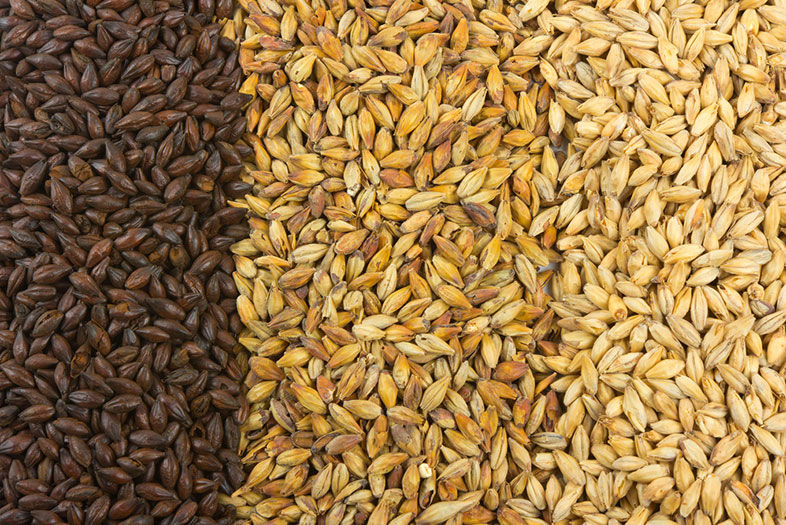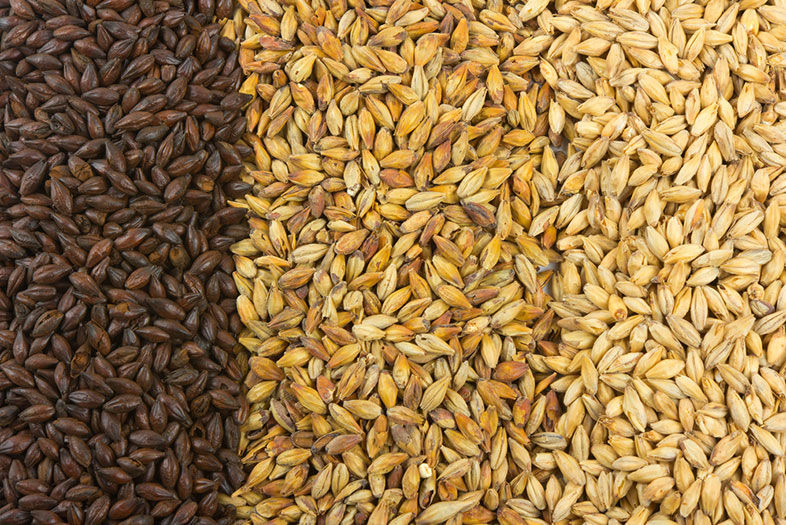“Are you a hoppy person or a malty person?” That’s usually my second question, the one that comes right after, “Can I get you a beer?” The answer to this second question (which, I assert, also happens to be a basic organizing principle for all humankind) is also the essential guidepost that helps me pick the right brew for a thirsty friend.
The question, despite its usefulness, is somewhat misleading, because every beer has both malt and hops in it, it’s just a matter of how much. What’s interesting is that most people think of beer as either “bitter” (translation: “hoppy”) or “not bitter” (translation: “not hoppy”) but very few people say they flat-out like “malty.” That may be partly because lots of folks think of “malty” as thick and heavy, which it can be, but it certainly is not in many instances.
Since we San Diegans inhabit a distinctly hop-crazed part of the world (indeed, we’ve touted and made famous our own unique style of turbo-hopped beers) I think it’s only fair to give a nod to malt for once. After all, without malt, there would be nothing to balance the super-bittering qualities of the great hops we love so much. So, here’s a basic rundown on malt; what it is, what it does, and why it’s basically awesome.
Malt is grain. The vast majority of malt in most beers comes from one plant: barley. The most common exceptions to that are oat malt, rye malt, and also wheat malt, which is essential to making wheat beers such as Hefeweizen and Dunkelweizen. Aside from those few exceptions, malt means barley.

Everything You Need to Know about Malt
Most malt comes from barley, here in its natural state.
Most malt comes from barley, here in its natural state.
Brewers need the starches and sugars in barley to create the foundation for every beer, but the starch and sugar in a freshly harvested grain of barley is not readily accessible for use. To make it accessible, the barley is malted, which means it is soaked in water until it germinates and then kilned to varying degrees in order to halt the germination process. Malted barley contains readily available starches and sugars that—when steeped or mashed with hot water for a period of time—create a sugary, starchy liquid called “wort” that forms the base for what will become the beer. Eventually, during fermentation, it’s the sugars in the wort that will be converted into alcohol by the yeast. Because malt is the first ingredient added to the water in the brewing process, and because it forms the foundation of what will later provide the critical levels of alcohol, sugar, and carbon dioxide, I always think of malt as the “backbone” of beer. Without it, you’d just have a flat, clear, bitter liquid with no alcohol.
“I always think of malt as the ‘backbone’ of beer. Without it, you’d just have a flat, clear, bitter liquid with no alcohol.”
There are many dozens of malt types, but the main characteristic that defines them is how light or dark (how toasted or roasted) each variety is. Most brewers use a combination of malt types in each recipe, creating a unique “malt bill” for each beer that provides the desired level of sugars and starches as well as the desired base flavors. The majority of most malt bills is comprised of what are referred to as “base” malts. Base malts include pale malt, Pilsner malt, Vienna and Munich malt, and many more. Each of those varieties, which are generally lightly kilned, will vary according to where they are grown; American base malt, for example, is fairly neutral and mild, whereas British base malts tend to be more biscuit-like. If you want to try a few styles that showcase these kinds of malts, try a Pilsner, a Helles, a blonde ale, a Kölsch, or any kind of light lager. These beers tend to be light, crisp, low on hops, and they put the toasty, biscuit character of the malts front and center.
To the base malts, brewers may add their own special mix of crystal malts (also known as caramel malts) and roasted malts, which are kilned to be extra dark. The roasted malts add the distinct flavors and aromas of coffee, dark chocolate, molasses, vanilla, and biscuits. The crystal malts are commonly used to add sweetness and color to a beer; they also sport aromas and flavors of caramel, toffee, vanilla, and lightly toasted nuttiness. Amber lagers, ESBs, red ales, Maibocks, and Scottish ales are the best showcases for caramel and crystal malts. For the more roasty experience, try a schwarzbier (black lager), a brown ale, a porter, or a stout.
As you become more aware of different malts and the flavors they provide, you may start to think of your personal tastes in more malt-specific ways. You may, for example, realize that you really love caramel malt, and you’ll seek out beers that utilize that ingredient most to your liking. And, when someone asks you if you’re “hoppy or malty,” you may very well respond by saying, “Malty, but not roasted or Pilsner malty… more like crystal malty.”

Everything You Need to Know about Malt
PARTNER CONTENT
Chocolate malt, crystal malt, and pale malt












